Abyssinian Guinea Pig
- March 21, 2024
- 0 comment
The Abyssinian Guinea Pig is a charming and popular breed known for its unique coat pattern and friendly disposition. Originating from South America, particularly the Andean region of present-day Peru, these delightful rodents have been domesticated for centuries. Characterized by their distinctive rosettes or whirls scattered across their bodies, Abyssinian Guinea Pigs boast a captivating appearance that appeals to pet enthusiasts worldwide. Beyond their striking coat, they possess a compact yet sturdy body structure with rounded heads and short legs, making them both adorable and easy to handle.
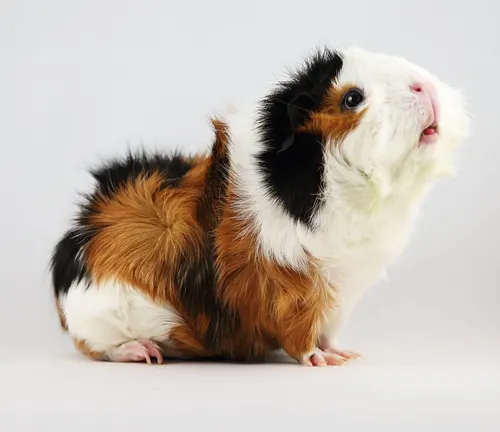
Renowned for their sociable nature, Abyssinian Guinea Pigs thrive on companionship and enjoy interacting with their human caregivers. They are curious and playful creatures, delighting in exploring their surroundings and engaging in enrichment activities. Providing a spacious and secure environment along with a balanced diet, regular grooming, and veterinary care is essential for ensuring the health and well-being of Abyssinian Guinea Pigs. Overall, these charming rodents make wonderful companions for individuals and families seeking affectionate and lively pets.
| Specification | Description |
|---|---|
| Coat Pattern | Distinctive rosettes or whirls scattered across the body |
| Body Structure | Sturdy and compact with rounded heads and short legs |
| Origin | South America, particularly the Andean region of present-day Peru |
| Personality Traits | Friendly, sociable, curious, and playful |
| Housing Requirements | Spacious cage with hiding spots and enrichment toys |
| Diet and Nutrition | High-quality hay, fresh vegetables, fruits, and guinea pig pellets |
| Grooming Needs | Regular brushing with a soft-bristled brush and occasional baths |
| Health Considerations | Dental problems, respiratory issues, and skin infections |
| Handling and Interaction | Gentle handling and interactive play to strengthen the bond |
| Breeding | Requires careful selection of breeding pairs and responsible practices |
| Common Misconceptions | Dispelling myths surrounding care needs, behavior, and suitability as pets |
A Fascinating Companion Pet
Abyssinian guinea pigs, with their distinctive rosettes and charming personalities, have captured the hearts of small pet enthusiasts worldwide. These delightful creatures, known for their unique appearance and endearing nature, make wonderful additions to households seeking lively companionship. In this comprehensive guide, we’ll delve into the world of Abyssinian guinea pigs, exploring their origin, characteristics, care needs, and more.
Origin and History
The Abyssinian guinea pig is believed to have originated from South America, where it was first domesticated by the indigenous people of the region. Despite its name suggesting an association with Abyssinia (modern-day Ethiopia), its roots trace back to the Andean region of present-day Peru. These charming rodents were initially bred for their meat and fur, eventually gaining popularity as beloved pets across the globe.
Physical Characteristics
Coat Patterns
Abyssinian Guinea Pigs are renowned for their distinctive coat patterns, characterized by rosettes or whirls scattered across their bodies. These rosettes create a unique and textured appearance, giving Abyssinian Guinea Pigs their signature charm. The rosettes are formed by groups of hairs growing in a circular or spiral pattern, creating a visually striking effect. While the exact arrangement of rosettes can vary from guinea pig to guinea pig, the overall result is a beautiful and eye-catching coat that sets Abyssinian Guinea Pigs apart from other breeds.
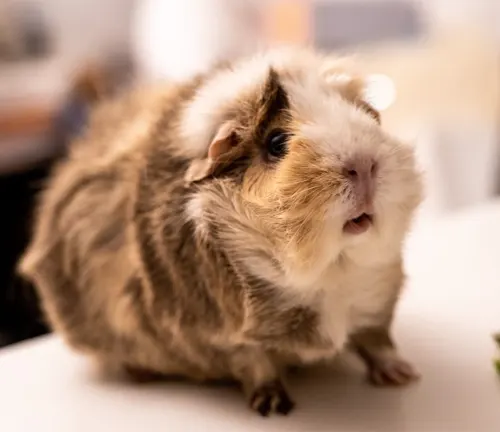
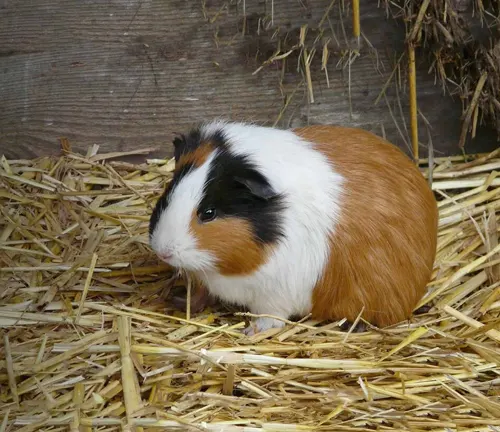
Body Structure
In addition to their striking coat patterns, Abyssinian Guinea Pigs have a sturdy and compact body structure. They typically have rounded heads, short legs, and a well-proportioned physique that is both adorable and easy to handle. Despite their small size, Abyssinian Guinea Pigs are robust and agile, capable of navigating their surroundings with confidence. Their compact body structure makes them well-suited for both indoor and outdoor environments, providing them with the agility and mobility to explore and play to their heart’s content. Overall, the combination of their unique coat patterns and sturdy body structure makes Abyssinian Guinea Pigs captivating and endearing pets for guinea pig enthusiasts around the world.
Personality Traits
Abyssinian Guinea Pigs are beloved for their friendly and sociable nature. These charming rodents are known for their affectionate demeanor and enjoy interacting with their human caregivers. They are curious and playful creatures, often delighting in exploring their surroundings and engaging in enrichment activities. Abyssinian Guinea Pigs thrive on companionship and often form strong bonds with their owners, seeking out attention and affection. They are generally gentle and tolerant of handling, making them suitable pets for families with children. With their endearing personality traits and sociable nature, Abyssinian Guinea Pigs bring joy and companionship to households around the world.
Housing Requirements
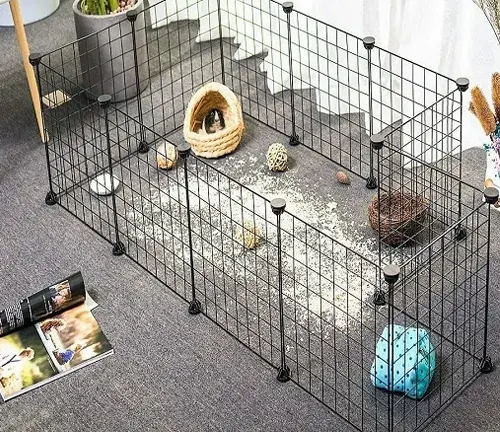

Providing a suitable living environment is essential for the health and well-being of Abyssinian Guinea Pigs. When it comes to housing, they require a spacious and secure cage that allows for ample room to move, explore, and exercise. The cage should be large enough to accommodate the guinea pig’s natural behaviors, including running, jumping, and burrowing.
It’s recommended to opt for a cage with a solid bottom to prevent injury to their delicate feet and to line the cage with appropriate bedding material such as hay or fleece. The bedding should be soft and absorbent, providing a comfortable surface for the guinea pig to rest and nestle in.
Additionally, Abyssinian Guinea Pigs benefit from having hiding spots and enrichment toys within their cage. Hiding spots such as igloos or tunnels provide a sense of security and privacy for the guinea pig, while toys such as chew sticks, tunnels, and puzzle feeders help stimulate their minds and prevent boredom.
Placement of the cage is also crucial. It should be situated in a quiet area of the house away from drafts, direct sunlight, and extreme temperature fluctuations. Guinea pigs are sensitive to heat and cold, so maintaining a comfortable temperature between 65°F to 75°F (18°C to 24°C) is essential for their well-being.
Regular cleaning and maintenance of the cage are necessary to ensure a clean and hygienic living environment for Abyssinian Guinea Pigs. Spot cleaning should be done daily to remove soiled bedding and waste, while a thorough cage cleaning with mild soap and water should be performed weekly to prevent odor and bacterial buildup.
Diet and Nutrition
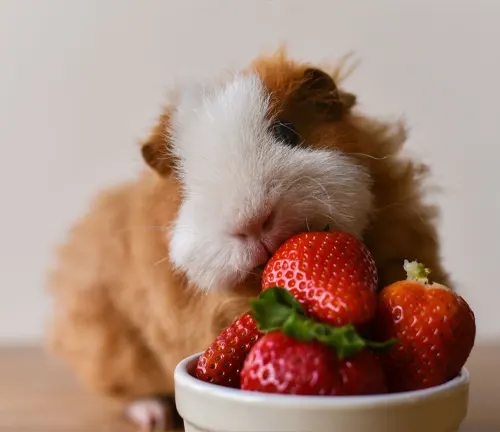
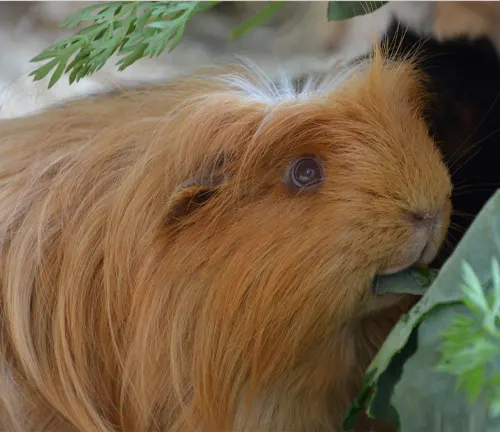
balanced diet is essential for the health and well-being of Abyssinian Guinea Pigs. Their diet should primarily consist of high-quality hay, which provides essential fiber to support digestive health and dental wear. Timothy hay is a popular choice for guinea pigs, although other types of grass hay, such as orchard grass or meadow hay, can also be offered.
In addition to hay, Abyssinian Guinea Pigs should be provided with fresh vegetables and fruits daily. Leafy greens such as romaine lettuce, spinach, kale, and parsley are excellent choices and should make up the bulk of their vegetable intake. Fruits such as apples, strawberries, and oranges can be offered in moderation as treats due to their higher sugar content.
Pellets formulated specifically for guinea pigs can also be included in their diet to ensure they receive essential vitamins and minerals. However, pellets should be fed in limited quantities to prevent obesity and other health issues. It’s essential to choose high-quality pellets that are free from added sugars, artificial colors, and fillers.
Fresh, clean water should be available to Abyssinian Guinea Pigs at all times. Water can be provided in a shallow dish or a sipper bottle attached to the side of the cage. It’s crucial to check the water supply daily and refill as needed to prevent dehydration.
It’s essential to avoid feeding Abyssinian Guinea Pigs foods that are high in sugar, fat, or salt, as these can lead to obesity, digestive upset, and other health problems. Foods to avoid include chocolate, caffeinated beverages, onions, garlic, and avocado.
Grooming Needs
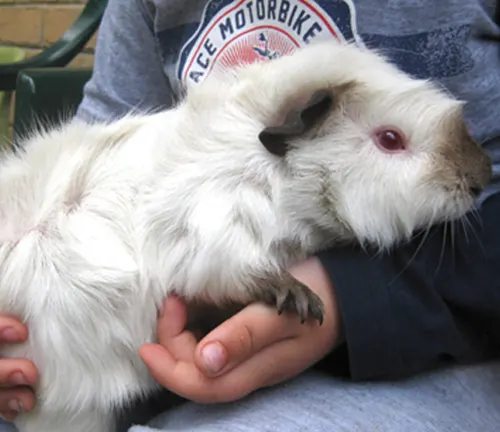
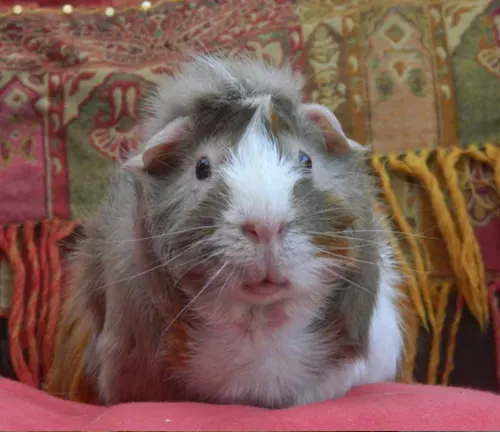
Regular grooming is essential to keep Abyssinian Guinea Pigs looking and feeling their best. While they are relatively low-maintenance in terms of grooming compared to some other pets, they still require some attention to maintain their coat and overall hygiene.
One of the primary grooming tasks for Abyssinian Guinea Pigs is brushing their fur. Their unique coat pattern, characterized by rosettes or whirls, can sometimes become tangled or matted if not properly maintained. Using a soft-bristled brush specifically designed for small animals, gently brush the fur in the direction of growth to remove loose hairs and prevent mats from forming.
In addition to brushing, Abyssinian Guinea Pigs may occasionally require baths to keep their coat clean and fresh. However, baths should be done sparingly, as excessive bathing can strip the natural oils from their skin and lead to dryness and irritation. When bathing your guinea pig, use a mild shampoo formulated specifically for small animals and be sure to rinse thoroughly to remove all traces of soap.
Regular nail trims are also essential for Abyssinian Guinea Pigs to prevent overgrowth and discomfort. Guinea pig nails can grow quickly and may become sharp or even curl under if left unchecked. Use a small, guinea pig-specific nail trimmer to carefully trim the tips of their nails, being cautious not to cut into the quick, which can cause bleeding and pain.
Lastly, it’s essential to keep their ears clean and free from wax buildup or debris. Using a soft, damp cloth, gently wipe the outer surface of their ears to remove any dirt or excess oil. Be careful not to insert anything into the ear canal, as this can cause injury or infection.
Health Considerations
Abyssinian Guinea Pigs, like all pets, are prone to certain health considerations that require attention and care. Dental problems, such as overgrown teeth or dental malocclusion, are common issues that can affect their ability to eat and lead to discomfort. Respiratory infections, often caused by drafts, damp bedding, or poor ventilation, are also prevalent among guinea pigs and require prompt veterinary treatment. Additionally, skin conditions such as fungal infections or mites can cause itching and discomfort if left untreated. Regular veterinary check-ups, a balanced diet, and proper hygiene are essential for maintaining the health and well-being of Abyssinian Guinea Pigs.
Handling and Interaction
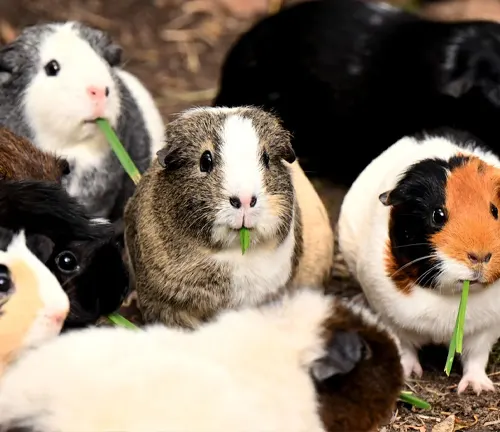

Proper handling and interaction are crucial for building a strong bond with Abyssinian Guinea Pigs and ensuring their comfort and well-being. When handling your guinea pig, it’s essential to support their body securely and avoid sudden movements that may startle or stress them. Speaking to them in a calm and soothing voice can help reassure them and foster trust. Additionally, spending quality time with your guinea pig through gentle petting, grooming, and interactive play sessions can strengthen the bond between you and enhance their overall happiness and socialization.
Breeding Abyssinian Guinea Pigs
Breeding Abyssinian Guinea Pigs requires careful consideration and responsible practices to ensure the health and welfare of the animals involved. It’s essential to select breeding pairs based on their health, temperament, and adherence to breed standards to produce healthy and genetically diverse offspring. Providing proper care and supervision throughout the breeding process is crucial to the success of the endeavor, including ensuring adequate prenatal and postnatal care for the mother and her young.
Common Misconceptions
There are several common misconceptions surrounding Abyssinian Guinea Pigs, including assumptions about their care needs, behavior, and suitability as pets. One common misconception is that guinea pigs are low-maintenance pets that require minimal care and attention. In reality, guinea pigs require daily interaction, a balanced diet, and regular veterinary check-ups to thrive. Another misconception is that guinea pigs are solitary animals that prefer to live alone. While some guinea pigs may be more independent than others, they are generally social creatures that benefit from companionship and interaction with their own kind.
Abyssinian Guinea Pig Care Tips
- Provide a spacious and enriched environment for your Abyssinian guinea pig to thrive.
- Offer a balanced diet consisting of hay, vegetables, fruits, and pellets formulated for guinea pigs.
- Schedule regular veterinary check-ups to monitor your guinea pig’s health and address any concerns promptly.
- Handle your guinea pig gently and respectfully, ensuring their comfort and well-being at all times.
- Invest time in bonding with your guinea pig through interactive play and affectionate gestures, fostering a strong and trusting relationship.
Different Breed
American Guinea Pig
This breed is known for its smooth coat and a wide variety of colors and patterns. American guinea pigs have a friendly and sociable temperament, making them popular pets.

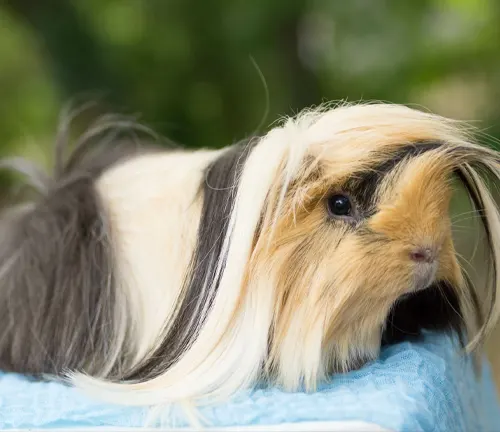
Peruvian Guinea Pig
Peruvian guinea pigs have long, flowing hair that grows continuously throughout their lives. They require regular grooming to prevent mats and tangles in their luxurious coats.
Silkie Guinea Pig
Silkie guinea pigs, also known as Sheltie guinea pigs, have long, silky hair that flows backward from their faces. They require careful grooming to maintain their stunning appearance.
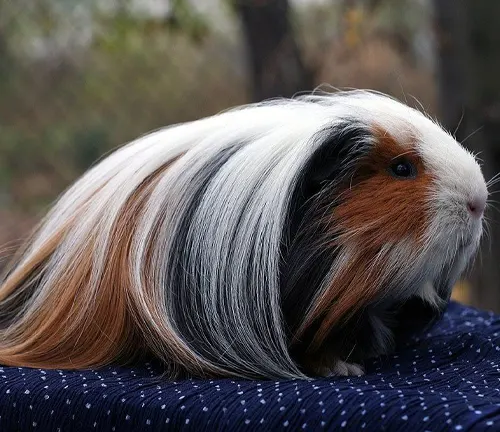
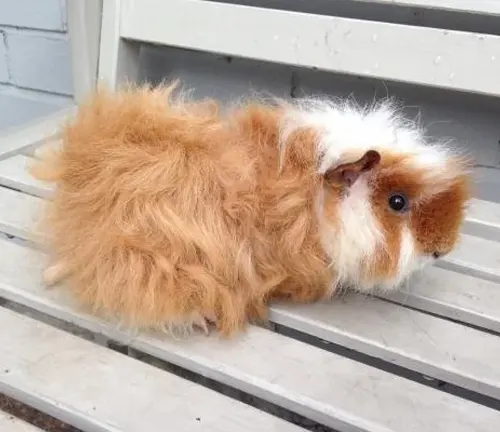
Texel Guinea Pig
Texel guinea pigs have curly or wavy hair that covers their entire bodies, giving them a unique and adorable appearance. They require regular grooming to prevent their coats from becoming matted.
Crested Guinea Pig
Crested guinea pigs have a single rosette or swirl of fur on top of their heads, giving them a distinctive “crest” or “mohawk” appearance. They are known for their friendly and outgoing personalities.
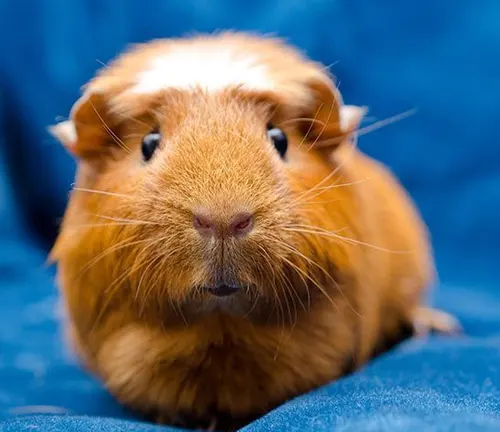
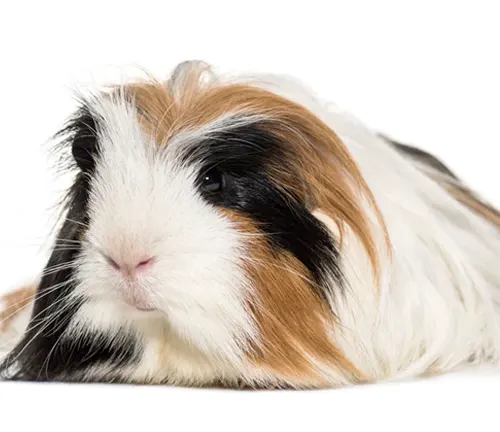
Coronet Guinea Pig
Coronet guinea pigs have a crest on top of their heads like crested guinea pigs, but they also have long, flowing hair that covers their bodies. They require regular grooming to maintain their coat’s health and appearance.
Skinny Guinea Pig
Skinny guinea pigs are hairless except for a small amount of fur on their noses, feet, and legs. They have smooth, wrinkled skin and require special care to protect them from temperature extremes.
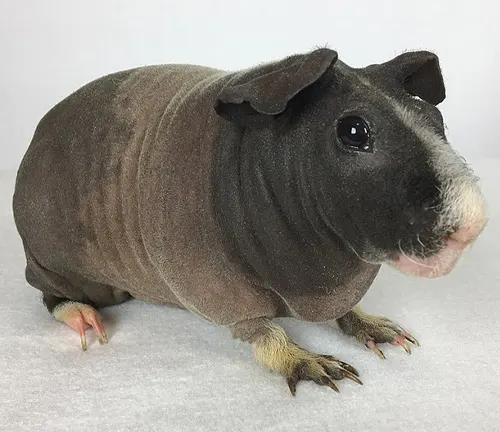
Frequently Asked Question (FAQs)
- Do Abyssinian Guinea Pigs require any special care compared to other guinea pig breeds?
While Abyssinian Guinea Pigs do not have any specific additional care requirements compared to other breeds, their unique coat pattern may necessitate more frequent grooming to prevent matting and maintain their appearance. - Are Abyssinian Guinea Pigs prone to any health problems?
Like all guinea pigs, Abyssinian Guinea Pigs can be susceptible to various health issues such as dental problems, respiratory infections, skin disorders, and obesity. Providing proper nutrition, regular veterinary check-ups, and a clean living environment can help mitigate these risks. - How long do Abyssinian Guinea Pigs typically live?
On average, Abyssinian Guinea Pigs have a lifespan of 5 to 7 years with proper care. However, individual longevity can vary depending on genetics, diet, exercise, and overall health management. - Can Abyssinian Guinea Pigs live alone, or do they require companionship?
Guinea pigs are social animals that thrive in the company of their own kind. While Abyssinian Guinea Pigs can live alone, they generally benefit from having a compatible companion for social interaction and mental stimulation. - What should I do if my Abyssinian Guinea Pig stops eating?
Loss of appetite in guinea pigs can be a sign of underlying health issues and should be taken seriously. If your Abyssinian Guinea Pig stops eating or shows a significant decrease in appetite, consult a veterinarian promptly for a thorough examination and appropriate treatment. - Can Abyssinian Guinea Pigs be litter trained?
Yes, Abyssinian Guinea Pigs can be trained to use a litter box, although success may vary from individual to individual. Providing a suitable litter box with appropriate bedding material and placing it in a consistent location within the cage can encourage litter training. - Do Abyssinian Guinea Pigs require any vaccinations?
There are currently no vaccines specifically designed for guinea pigs, including Abyssinian Guinea Pigs. However, maintaining good hygiene practices, providing a balanced diet, and ensuring a clean living environment can help prevent the spread of infectious diseases. - Are Abyssinian Guinea Pigs nocturnal animals?
No, Abyssinian Guinea Pigs are diurnal, meaning they are most active during the day and rest at night. They typically follow a natural cycle of activity and sleep, engaging in play, feeding, and social interaction during daylight hours. - Can Abyssinian Guinea Pigs be trained to perform tricks or commands?
While Abyssinian Guinea Pigs are intelligent and can learn simple behaviors through positive reinforcement training, their capacity for complex tricks or commands is limited compared to other animals such as dogs or parrots. - Are there any specific environmental conditions Abyssinian Guinea Pigs require?
Abyssinian Guinea Pigs thrive in moderate temperatures ranging from 65°F to 75°F (18°C to 24°C) and prefer environments with low humidity levels. Additionally, they should be kept away from drafts, direct sunlight, and extreme temperature fluctuations to prevent stress or health issues.


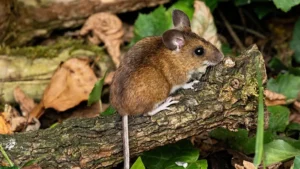
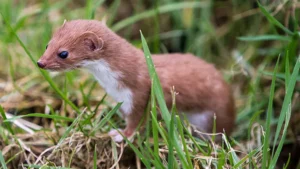


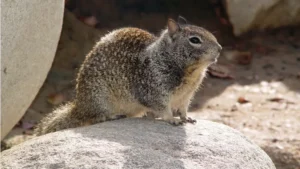


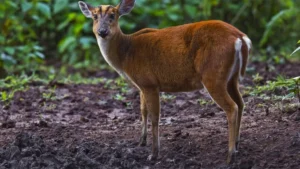
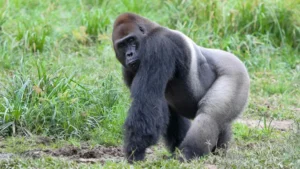



Leave your comment